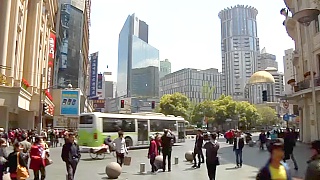TiānMén Shān lies near the city of ZhangJiaJie ...
[640],shadow=true,start=,stop=
Live more ...
 The stunning TianMen (‘Heaven’s Door’) Mountain 天门山, HuNan province
The stunning TianMen (‘Heaven’s Door’) Mountain 天门山, HuNan provinceTiānMén Shān lies near the city of ZhangJiaJie ...
[640],shadow=true,start=,stop=

|
Provincial capital of GuangDong.
|

|
With The New Atlas - Inflection - Brian Berletic and Angelo Giuliano ...
Bonus film - with Mark Sleboda - don't miss this either ...
|

|
StudyAbroadUSAC - Study Abroad, in ChengDu and ShangHai
|

|
With Walk East ...
Phoenix ancient town, night walk ...
|

|
Once in China, you won't want to leave.
With Part Time Traveller - China ...
With BeeRose in China ...
With KING KWESI ...
With SNIDE ...
|

|
With Einzelgänger ...
Bonus film - Erich Fromm on 'To Have or To Be' ...
|